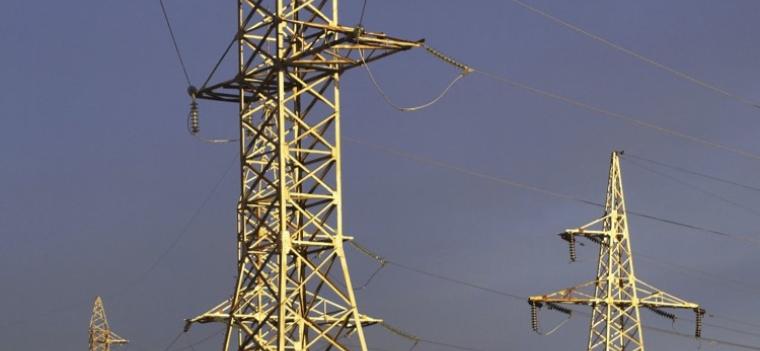News
Story Highlights
- The Kyrgyz Republic's population relies heavily on electric heating in the winter, especially in the capital of Bishkek, but the reliability of the energy supply is deteriorating and ageing infrastructure contributes to high thermal losses.
- With support from the Energy Sector Management Assistance Program and the Central Asia Energy Water Development Program, a project team conducted a technical and economic assessment for the district heating system operated by the local heat transmission and distribution company, Bishkekteploset JSC.
- The assessment recommended four priority investment plans based on analysis of four key investment areas. The findings were detailed in a report, District Heating Efficiency and Reliability Improvement in Bishkek, released in September 2015.
Improving District Heating Efficiency and Reliability in Bishkek
February 12 2016
In the midst of cold winters in the Kyrgyz Republic, the population relies heavily on electric heating. The growth of winter electricity consumption is particularly pronounced in the capital, Bishkek.
However, the reliability of the energy supply is deteriorating—the number of transmission and distribution (T&D) network failures increased from 50 breakdowns in 1991 to 269 during the heating season in 2013. The ageing infrastructure underlies this problem: more than 70 percent of the steam and hot water networks are older than 25 years. As a result, thermal losses exceed 26 percent of the heat injected into Bishkek’s district heating system, operated by the local heat transmission and distribution company, Bishkekteploset JSC (BTS), and represent a significant economic and financial loss for the country and BTS.
In 2015, the World Bank completed an urban heating assessment, Keeping Warm: Urban Heating Options for Kyrgyz Republic, identifying district heating (DH)—a system for distributing heat for residential and commercial purposes—as the most economically viable heating option for Bishkek and ranking loss reduction measures on the distribution side among the most cost-effective investment opportunities.
With support from the Energy Sector Management Assistance Program (ESMAP) and the Central Asia Energy Water Development Program (CAEWDP), a project team conducted a technical and economic assessment for the DH system operated by BTS. The objective was to help BTS develop an investment and implementation plan to improve the reliability and efficiency of its DH system.
In close cooperation with BTS, the team reviewed the findings and results of the urban heating assessment conducted by the World Bank; collected and analyzed additional company data including technical, operational, and administrative information, practices, and records; conducted targeted walk-through audits in typical buildings and site inspections of the distribution network and pumping stations; and interviewed DH company management and specialists as well as government authorities.
The assessment recommended four priority investment plans based on analysis of four key investment areas: (i) consumer substations, where the heat network is connected to the central heating of homes, (ii) heat and hot water metering for both buildings and individual apartments; (iii) T&D network improvement; and (iv) DH circulation pumps with variable-speed drives (VSDs). Costs and benefits of each key investment measure were assessed on a stand-alone basis as well as in combination with other measures.
The findings were detailed in a report, District Heating Efficiency and Reliability Improvement in Bishkek, released in September 2015.
In all four priority investment plans, the assessment recommended replacing VSD pumps and supervisory control and data acquisition (SCADA) systems as a first priority. VSD pumps adjust the flow of heat and water to eliminate energy waste, but the majority of pumps have exceeded their useful service life and operate only at constant flow. Efficient and reliable booster pumps are critical for ensuring adequate heat supply to all parts of the city. A new SCADA is needed for the efficient operation of the DH system, including control of VSD pumps.
As the second priority, the assessment recommended repairing existing or installing new consumer substations, which would improve the quality of heat and hot water supply with better flow, temperature, and pressure control. In addition, 70 percent of the heat network is over 25 years old and in worn-out condition.
The third priority, therefore, is targeted upgrade of the T&D network by replacing pipelines in poor condition, which would reduce the number of supply interruptions and emergency repair.
“The analytical and advisory work supported by ESMAP was critical in getting a comprehensive discussion started on the importance of improving heat supply services in the Kyrgyz Republic,” said Kathrin Hofer, World Bank Energy Specialist and the task team leader of the project.
“The World Bank assessments have shown us where the greatest energy inefficiencies are,” said Erkin Abdykalykov, General Director of BTS. “By carrying out some of the priority options presented to us, we hope to not only reduce our heat losses and water leakages but also increase delivery and quality of service for our customers.”
BTS will prepare procurement specifications for each component, with additional technical support and expertise from the World Bank, as needed.
The team plans to initiate a second follow-up activity focusing on individual heating solutions under the new Efficient Clean Cooking and Heating program and, at the Kyrgyz government’s request, is preparing an investment lending project in the heating sector, based on the results and recommendations of the recent World Bank activities.
Learn more about the Energy Efficient Cities Program.
